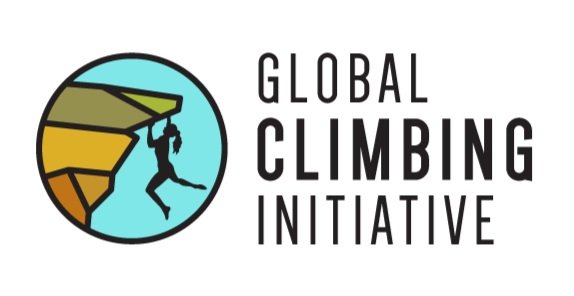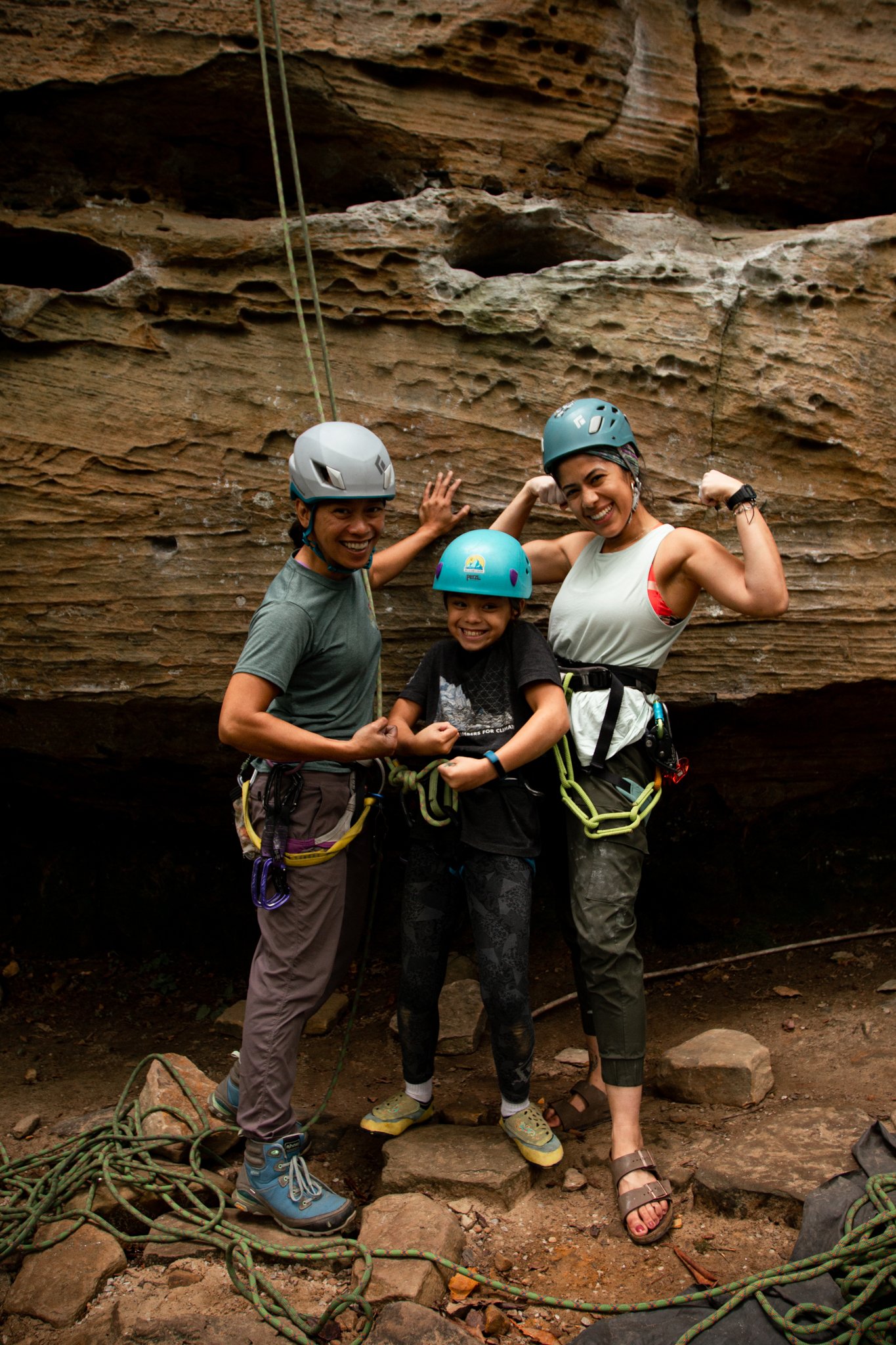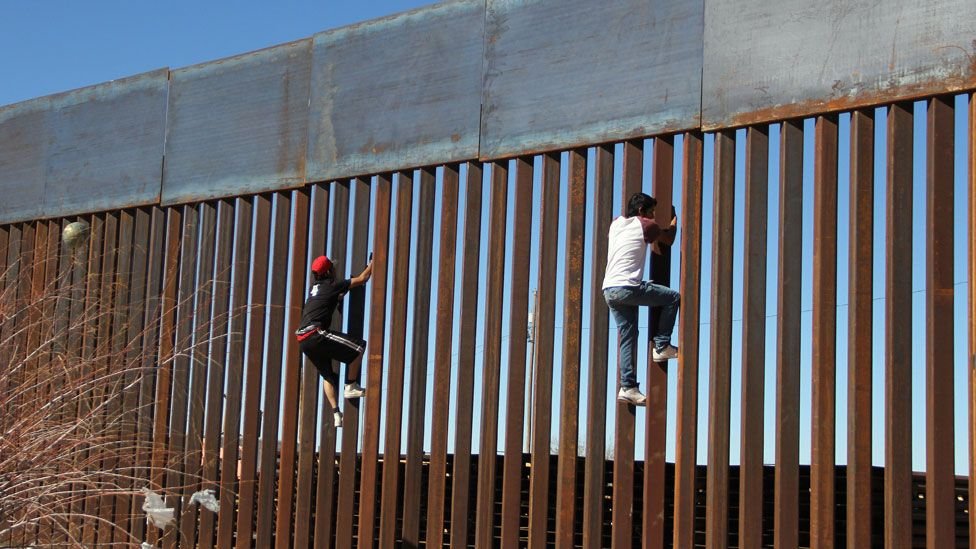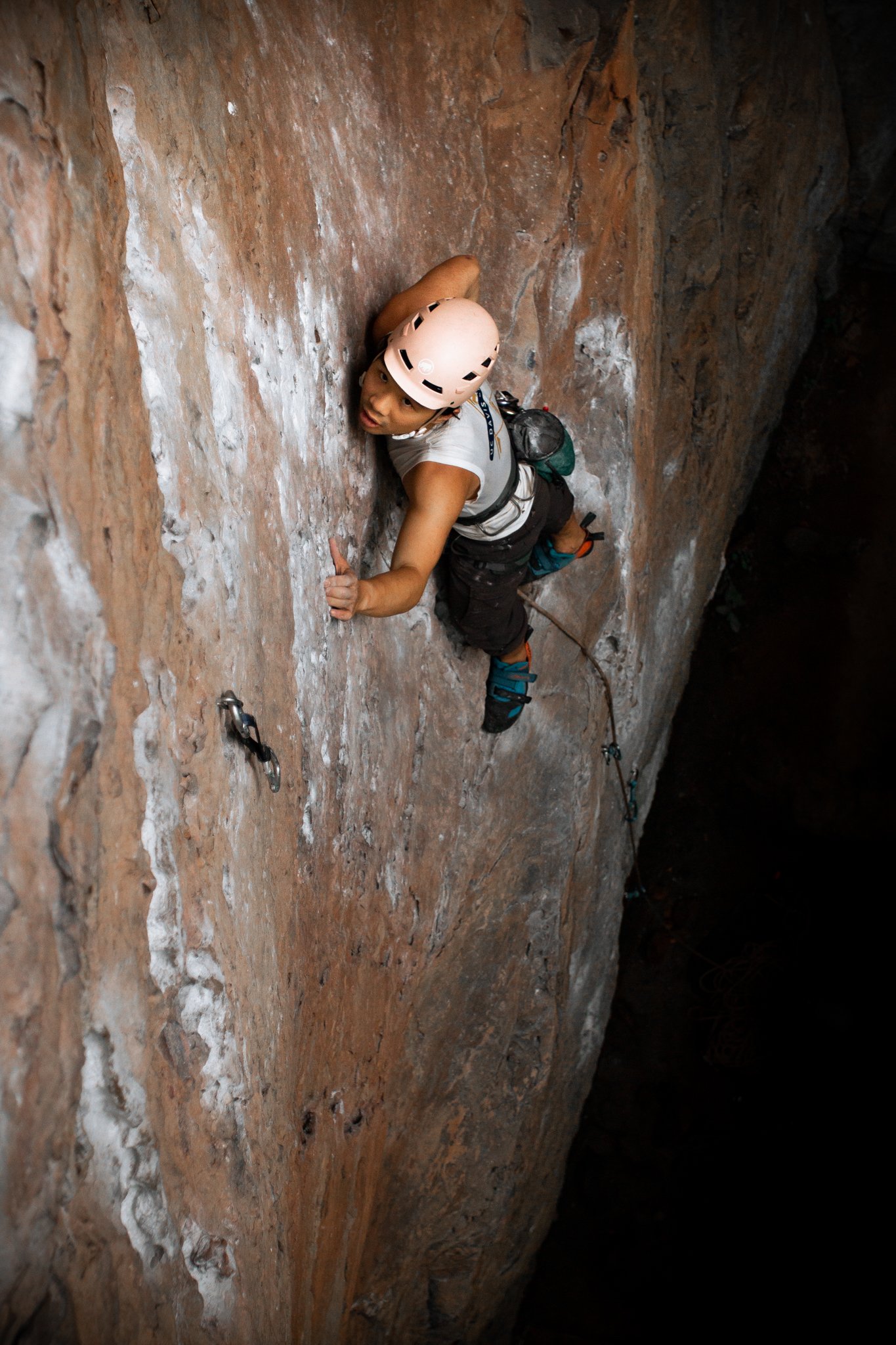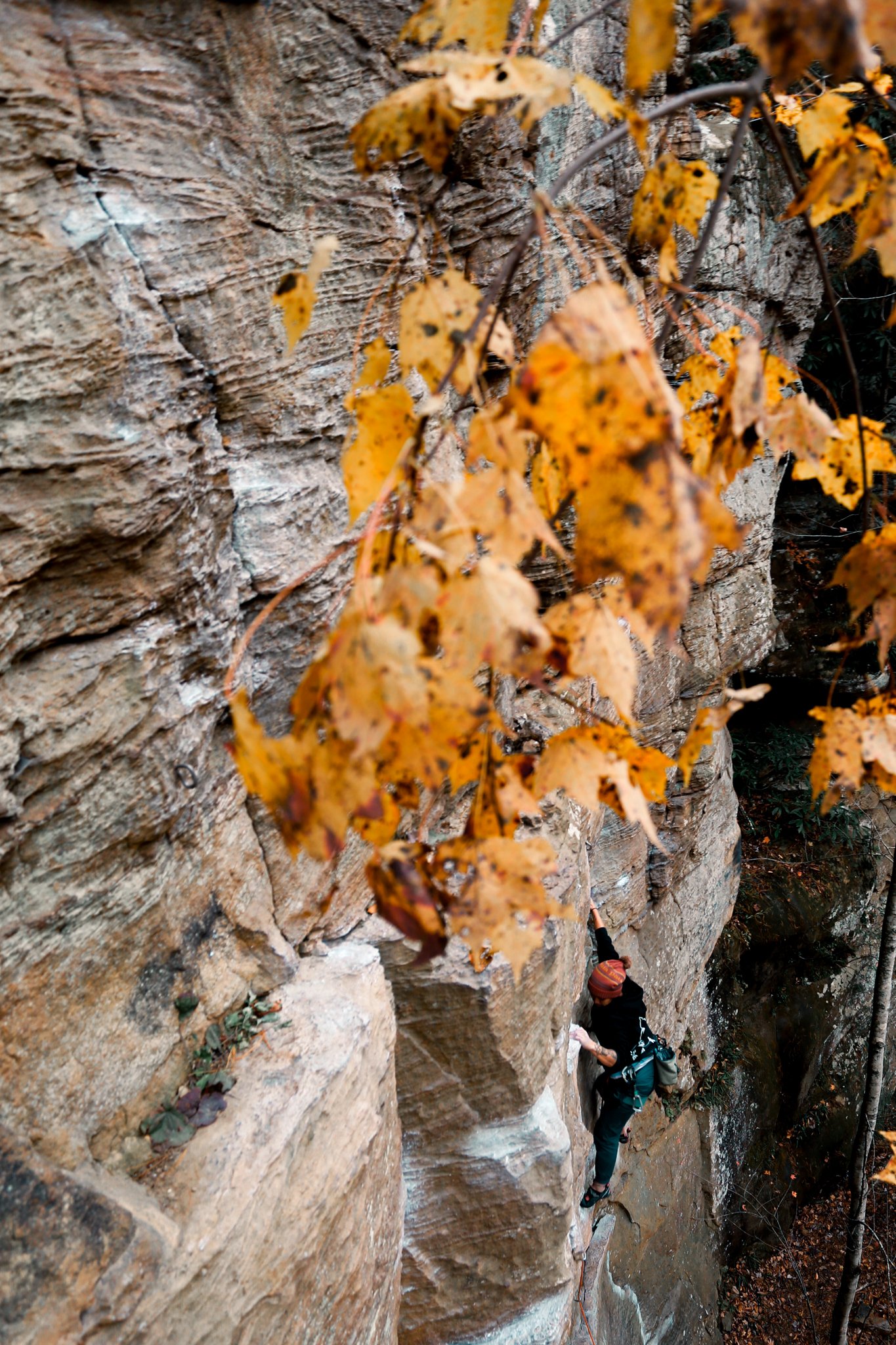Climbing With Immigrants
Stories Across the Wall
By Katherine González | January 31, 2022
Photo: Katherine Gonzalez climbs at the Secret Gardens, Miller Fork, Red River Gorge. Photography: Carl Cote (@coteology)
Karla Hancock from the Philippines and her daughter Lucy sharing some laughs on a hot summer day at the Red. Photo: Katherine Gonzalez (@kathglz_)
“Tu lenguaje, tu acento... Yo quiero descubrir lo que ya estaba descubierto...
Ser un emigrante ese es mi deporte.”
“Your language, your accent… I want to discover what has already been discovered...
Being an immigrant, that’s my sport.”
Lyrics from “Pa'l Norte” by Calle 13
When I was in college, I learned the concept of migration as one of the most fundamental phenomena of nature. In the paper, “What is Migration?”, by Hugh Dingle and V. Alistair Drake, migration is defined as “an adaptation to resources that fluctuate spatiotemporally either seasonally or less predictably”. The authors also highlight migration as a “heroic” movement of individuals over long distances. Biologists have long recognized migration as a key process for the survival of animal and plant populations, and its role is fundamental in maintaining genetic diversity between populations of the same species. Despite its place in the natural world, however, modern human migration is described as the outcome of a socio-political problem. Society usually considers migrants wholly responsible for their lives and living conditions, without recognizing the active role that many developed countries have played in the social, economic, and political destabilization of the countries where most immigrants come from.
Nature, as beautiful as we know it, is the outcome of multiple processes, including migration
- Katherine González
Yiting Koh from Singapore climbs at Mustatacuck Park, Vernon, Indiana. Photo: Katherine Gonzalez (@kathglz_)
“I am going to cross the wall, I am an intruder with the identity of a convict.”
Lyrics from “Pa'l Norte” by Calle 13
In 2021 alone, nearly 1.66 million immigrants crossed the U.S. border with Mexico, one of the highest numbers registered to date. In June of the same year, during her first official visit out of the country, United States Vice President Kamala Harris addressed Central American migration with a brief message: “Do not come.”
Historically, the word ‘immigrant’ has had multiple negative connotations in modern society. It takes only five minutes of looking through images on Google: photos of kids holding protest banners that say “we are not criminals''; a mom breastfeeding her child while waiting in line to be deported by the police; migrant workers standing in the hard sun to start their working day; people crying while members of their family are being taken away by the police. Then, a wall.
Migrants attempt to climb a wall at the U.S.-Mexico border. Photo credit: Getty Images (https://www.bbc.com/news/world-us-canada-39215655)
Like many of you, I grew up seeing images of what an immigrant was supposed to look like, in a rural town near San Jose, the capital of Costa Rica. I always had immigrant classmates from Nicaragua, El Salvador, and Colombia. In my early memories, the immigrant kids were labeled as poor, their families were considered uneducated and dangerous, most likely living in the ‘undesirable’ neighborhoods of the city. Often silent and rejected, many of these kids were bullied for their living conditions and cultural identity. In Costa Rica, one out of ten people is an immigrant, and around 75% of the immigrant population in the country are Nicaraguan. With such high numbers, it was almost impossible that I would not cross paths with an immigrant kid in my school. However, I never made friends with them. I was curious about their lives, but I never made the effort to talk to them. Perhaps I was afraid of them because they were ‘different’... something that life would soon teach me about.
Andy Muan from Taiwan at the Red River Gorge, Kentucky. Photo: Katherine Gonzalez (@kathglz_)
I became an immigrant.
In 2019, I moved to the United States under the migratory status of ‘non-resident alien’, two words that, to this date, remind me how it feels to exist as an immigrant in this country. After I moved here, I visited my family for winter break before the pandemic started. I remember watching the news with my grandpa, and a report about Nicaraguan immigrants came up on the television, to which grandpa said: “Well, if they don’t like our country they can leave, no one wants them here”.
I responded: “Grandpa, that is me in the USA… your granddaughter is an immigrant too”. After ten minutes of self-reflection, my grandpa approached me and hugged me. He was thankful I questioned him.
My abuelo died months later from a heart attack, and this was one of our last in-person conversations. I watched his funeral through a little screen in my living room. I cried for days, remembering that conversation about the Nicaraguan immigrants.
But as did my grandpa, many others have also expressed their rejection towards immigrants. I mean, didn’t we grow up thinking at some point that being an immigrant is a horrible thing? Don’t we, at some point in our lives, think that immigrants are nothing more than powerless people trying to cross a border? After my grandpa's death, the end of a toxic, abusive relationship, and almost a year of isolation during the pandemic, I felt lost. Such deep pain made me feel weak, desperate, and alone. I felt like an alien living on a strange planet.
Then, I found climbing. It gave me what nothing else has been able to do: it empowered me. Every time I climbed, I was reminded of the strong and brave human I was before moving here. Somehow, I connected with myself again. Climbing made me realize that just because I was vulnerable at this particular point in my life, it was not because I was weak. Instead, my vulnerability was making me a better human, a human who was pushing higher and higher on a wall, as I was also assimilating into a new culture with my not-so-perfect English.
I found it ironic. A wall was making an immigrant stronger.
Margarita Martinez from Puerto Rico at the Red River Gorge, Kentucky. Photo: Katherine Gonzalez (@kathglz_)
But, as I grew in both the sport of being an immigrant and of climbing walls, I constantly remembered the same images of immigrants represented in the media, and I decided to do something about it. I set the goal to climb a wall with immigrants. Thus my project, “Climbing with Immigrants”, was born. Through my camera, I wanted to tell a different story from what I grew up seeing and thinking about immigrants. I wanted to tell their migration stories. I wanted to portray their power, their smiles, and their bravery.
Just for a day, the same wall that has represented separation and pain for so many immigrants… for us, it represented joy and trust through the one thing that brought us all together: climbing.
So far, I have climbed with seven other immigrants, each of them with unique experiences that showed me the unique courage and strength they possess. We laughed and cried, remembering home. We shared the pain of not seeing our parents getting older, or missing funerals or birthdays. We remembered the taste of our favorite food back home. We encouraged each other to keep smiling and being kind to each other—all of this, because of a wall. As it did for me, climbing has the potential to become instrumental in the healing and empowerment of marginalized communities across the world, including immigrants.
Some might say climbing is not political, but for others, the simple act of climbing a wall cannot be separated from our already-politicized identity. We navigate spaces with a different cultural identity, as we communicate with a different accent. But now, every time an immigrant climbs a wall, we can recognize it as part of a movement, a rediscovery of our heritage and culture, and a celebration of the humans who once crossed borders, are now moving across walls.
Corin Marichu was born in the Philippines and later adopted by her American parents. Photo: Katherine Gonzalez (@kathglz_)
